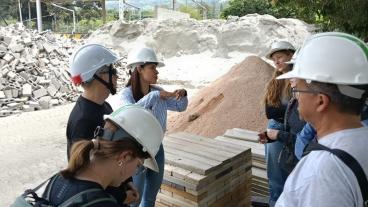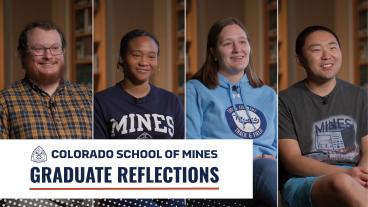Researchers at Colorado School of Mines are discovering ways to make longer lasting lithium batteries and new ceramics for armors, windows and fuel cells.
“The possibility for opening up new applications in energy are huge,” Metallurgical and Materials Engineering Associate Professor Brian Gorman said.
Gorman and his team have recently proven that, for the first time, the full periodic table can be examined in ceramics by counting atoms one at a time. They are using new equipment to look at an atom’s arrangement and predict the properties of the material.
“We can start to determine electrical resistivity, ionic conductivity, how well it conducts oxygen or hydrogen and start to determine how strong it is,” Gorman said.
Their research isn’t done on a computer, but rather on real materials using a combined electron microscope and atom probe instrument. The team is able to study why the strongest ceramics break and why certain solar cells produce more electrical current.
Last fall, Gorman received a grant from the National Science Foundation to build the instrument. While there are eight atom probe instruments being used at U.S. universities, Mines is developing the world’s first atom probe instrument with an electron microscope attached. This equipment allows his team to heat and cool specimens at a rate of 10 trillion degrees per second, fast enough to “freeze” individual atoms as they move in a solid.
Gorman’s collaborators at the National Renewable Energy Laboratory (NREL) develop high efficiency, low cost solar cells. In a new program funded by the Department of Energy, Gorman and his NREL collaborators are working to understand why current cannot escape the solar cell efficiently. Understanding these materials at the atomic scale will allow companies to produce solar cells with much higher efficiencies.
The materials in this device are Cadmium Telluride.
“The highest efficiency devices that have been made so far are around 18 percent, meaning only 18 percent of the sunlight that hits the solar panel generates electrical current,” Gorman said. “Our new program allows us to understand why out of place atoms reduce this efficiency. Ultimately, we are aiming to improve efficiency to 24 percent in three years.”
Graduate student Adam Stokes works on the research team with Gorman. He analyzes grain boundaries in a different solar absorber material, also in relation to how efficient solar cells can be made. The equipment allows Stokes to narrow down at an atomic level what exists in the material.
“The atom probe is very unique in that the resolution spatially is amazing, as well as the chemical sensitivity,” Stokes said. “You can analyze materials at a really fundamental level that you can’t do anywhere else.”
Contact:
Kathleen Morton, Communications Coordinator / 303-273-3088 / KMorton@mines.edu
Karen Gilbert, Director of Public Relations / 303-273-3541 / KGilbert@mines.edu



